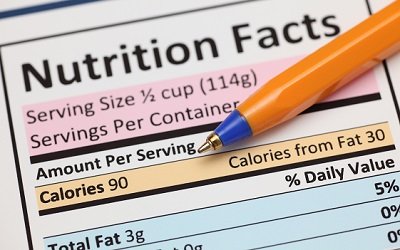Inside BENEO’s new pulse plant: pioneering sustainable protein from faba beans
The Food Safety and Standards (Packaging and Labeling) Regulations 2011 and similar regulations demand declaration of durability period on packaged foods. Commonly referred to as shelf life, this information is in fact today accepted as “Right of a consumer to know the durability of the product they buy”. There is more misunderstanding on this aspect especially related to the right methods/approaches that can be taken to generate this data. Based on such data, the manufacturers have to put ‘best before use’ date on the label of the packaged foods. It is common to take the same scientific route that forms the methods for shelf life determination of medicines. Elaborate guidelines are available for studies for drugs.
In case of medicines, involving synthetic compounds, knowledge and data on the kinetics of degradation forms the basis for shelf life determination. Predicting shelf life – the time taken for 10% of the active drug to deteriorate – is well understood and possible for determination for drugs. During the development stage of any drug or its formulations, such predictive data is generatable based on accelerated stability studies. Storing samples of drug or formulations at challenge conditions of higher temperature, humidity, light, exposure to air are possible and accurate analysis of the parent molecule and its degraded compounds can be achieved.
Such predictions lead to assignment of shelf life – the expiry date to the drug or formulation. The term expiry date does not mean a sudden death for that drug. Regulations about the expiry date, a date beyond which such drugs should not be stored or offered for sale or sold are strictly stipulated in the drug laws. In such studies, primary focus is on the active molecule and its status in pure form. A far less focus happens on the drug or formulations, appearance/sensorials. Such an approach is the most economical, scientific and rapid than an ideal ‘real time stability studies’ which may take as much as two years if intended shelf life is two years.
In absence of data of accelerated stability studies, approach like analysis retrospectively of retention/controlled samples stored for different periods of time from the date of manufacture is common. Alternatively, a strong and well accepted approach is to collect samples of the drug/formulation from the market which have elapsed different periods of storage. Analysing them can generate perhaps a best data to evaluate and confirm the shelf life marked on such products. There is no single approach that should be insisted on the manufacturers.
In comparison, for foods the approach is entirely different. It focuses more on the appearance, taste, colour, structure, feel, and overall sensorial rather than the purity of any single compound. Foods being multi-component products, and taste normally overrules the chemical purity of any selected compound. The approach for accelerated shelf life studies itself will be different than drugs. Microbiological quality, leading to spoilage due to growth of microbes, degradation like generation of colour different from the original colour of the food product and changed taste and smell are far more dangerous from a consumer’s point of view than purity of any single compound.
Fruit juices are well-known to be still nutritious and may contain the vitamins and minerals without any degradation but browning of the juice due to simple Millard reaction can put off a consumer from buying or drinking such juices. Only when food products make a nutrient content claim or a specific health benefit coming from a nutrient, the presence and quantity of such nutrient and the purity becomes important. Such nutrient needs to be measured at different stations of storage and ensure availability in desired levels till the end of best before use date.
In a food product, the quantitative levels and purity of such nutrients may be intact, but sensorially the product is unacceptable to the consumer. Such a product becomes expired. Since the emphasis in case of foods’ shelf life is overall acceptability to the consumer rather than quantitative purity of selected nutrients, the regulations demand labeling of ‘best before use date’ and not expiry date.
Copy pasting the protocols adapted for drugs to foods is not a right approach. Like in drugs, any one or more of the approaches – accelerated studies, real time studies, retrospective controlled sample studies, retrospective real time studies from samples collected from the market post launch – are acceptable and can be undertaken depending on the food product and the stage in which data to support durability date is being generated.
Scientists and regulators need to take a practical view in such situations and consider data from any of these methods. However, the growing market of packaged foods and more so growth in food supplements would demand a combined approach in such studies. A great stress on the sensorials of the product, coupled with a stress on quantitative analysis of an active nutrient/s, microbial quality/ preservation, needs to be put into protocols.
In case of food where a nutrient cannot be estimated quantitatively but is biologically active then, the biological activity should be measured to ensure activity till the last day of best before use date. For example: in case of nutrients being – enzymes, probiotics, immune promoting actives, etc. In case of foods and supplements which may have nutraceuticals or phyto-nutrients (botanicals), an appropriate analytical design needs to be adapted.
Flexibility basis science, logic, analytical ability to measure, cost of studies should be the factors to guide shelf life data generation for foods and food supplements. Innovation in science is possible in this area. Rigidity is harmful and unwarranted.

